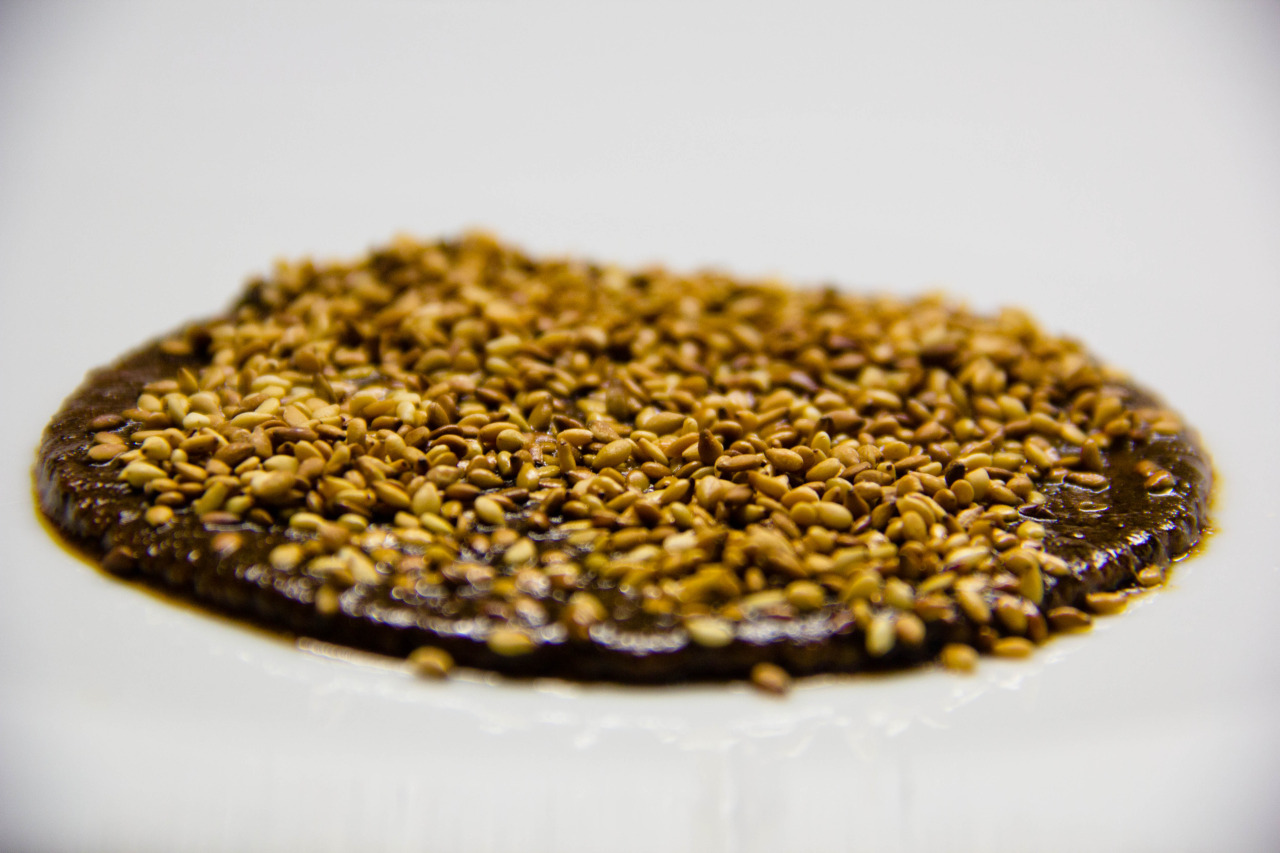Eating Invaders
Anna Lipin is a current student at Yale whose writing has appeared in Lucky Peach and Cherry Bombe. She’s a staff member of the Yale Sustainable Food Program, which is partnering with MAD in the inaugural MAD Yale Leadership summit in June.
I’m sitting in the dining room of Miya’s Sushi in New Haven, Connecticut. Scraggly house-made pickled ginger is on the table in front of me alongside Miya’s own “citrus organic gluten free blend” soy sauce. I’m deciding between lionfish sashimi and a Chesapeake Bay catfish roll for lunch.
Who knew you could even eat lionfish?
These unconventional sushi options are not merely on the menu for shock effect. The fish involved are invasive species: threats to the environment from which they were caught.
Invasive species are broadly defined by The National Invasive Species Information Center (NISIC) as “plants, animals, or pathogens that are non-native (or alien) to the ecosystem under consideration and whose introduction causes or is likely to cause harm”. Think of invasion as ecological cultural exchange with a dark side. Some invasive species make the trip from one habitat to another on their own, but humans are largely to blame for carrying alien species into new environments. We bring home exotic plants and beasts as souvenirs from abroad, or purposefully introduce a species we’ve tasted elsewhere in order to be able to present it on our own tables.
Miya’s, which has been a New Haven staple since the eighties, eschews conventional sushi menu items because, according to its website, “the traditional cuisine of sushi is destroying our oceans.” The restaurant tries to serve food in a “ecologically responsible manner,” which means a half-vegetarian, half-“hyper-local sustainable seafood not conventionally used for sushi” menu. After talking with Bun Lai, the chef at Miya’s, I realized I needed to know more about his brand of “hyper-localism.”
•••
To get a better idea of the threats invasive species pose, I spoke to the scientists behind Invasivore and Eat the Invaders. Both websites provide an insight into how eating invasives represents a new type of local eating, with recipes, tips, and maps for those interested in finding and cooking invasives in their area.
The distinction between the tropical plant that might decorate your living room and an invader lies in the latter’s detrimental impact. Conservation biologist Joe Roman, who has worked with chefs to develop recipes for Eat the Invaders, told me that “nonnative species can be something that you grow as an ornamental in your backyard but doesn’t escape the backyard”. In contrast, the invasive “jumps the garden fence . . . and really becomes a permanent part of the ecosystem”.
Invasions have been occurring for millennia, from stone-age migrations to the conquistadores’ introduction of feral pigs and dandelions to the new world. Rats have been stowing away on ships and colonizing new territories at the same pace as humans have, wiping out native rodent populations. As the world has become increasingly interconnected, so too have its ecosystems.
Zebra mussels are a particularly well-documented illustration. These tiny creatures, which are a mere fraction of the size of a mussel you’d eat at home, were introduced into the Great Lakes region in the mid 1900s after a couple centuries of steady invasion throughout Europe. They are incredibly hardy and colonize any firm surface in a body of water—docks, boats, anchors, buoys, motors. The tiny mollusks clog pipelines, deterring human water consumption and the business of hydroelectric companies. Andy Deines of Invasivore says the mussels “end up fouling everything that comes in contact with the water, from boat propellers and boat engines to anchor lines.” They’ve driven native North American mussels to near-extinction through competition for habitat and resources, depriving diners of the opportunity to eat local mussels, as the zebras are too small to be edible. They hinder lakeside recreation with their sharp, jagged shells that have a tendency to slice into human feet. All told, Deines said, the zebra mussels cost “millions if not billions of dollars in damages every year.”
There’s a limited playbook for attacking invasive species, and the strategies to combat them are most effective the earlier they are deployed. The first goal is to prevent new colonies entirely, through close watch on especially transitive species and potential invasion sites. Once a species is introduced, “the chances of being able to get it under control decrease exponentially,” says Deines. Conservators could try to quarantine the invaded lake and wash all the vehicles that come into contact with it. Yet all of those options involve knowledge and political will, which can often be lacking. Making an invasive species illegal to harvest or incentivizing its hunting is a slow process. “The laws,” says Deines, “seem to be constantly playing catch-up.”
The option of last resort is mass extermination, like sealing off a harbor and killing everything within it to deter an invasive mussel. Roman acknowledges that it’s “a horrible thing to do,” but maintains it’s much better than letting a species “take over and change the system for what is essentially forever.”
Humans have been doing this for millennia. We’re routine perpetrators of serial depletion, hunting one species to extinction and then focusing on the next. Our appetite for Atlantic cod and Chinook salmon are threatening those species with extinction; the passenger pigeon and many marine fish have been left to history. In a way, we’re the planet’s most invasive species.
The editors of Invasivore and Eat the Invaders are part of a growing contingent of academics, chefs, and adventurous eaters who are trying to urge the destructive human palate to pick after species our own size. By using our voracious tastes to target invaders, we might find ways to eat from the environment guilt-free.
•••
Roman hatched the idea for Eat the Invaders when he was researching invasive green crabs on the U.S.’s northeast coast. He noticed a man collecting periwinkles, an invasive snail whose population has boomed in the U.S. in the last couple of centuries. The collector was planning to sell the snails to markets in New York’s Chinatown and Little Italy, whose customers had a taste for them. Roman’s work as a conservation biologist often paints a pessimistic picture of humans’ imprint on the health of native species populations. However, in this chance encounter he realized that encouraging increased consumption of harmful species might not be a bad idea. He set out contacting “chefs and foodies and foragers,” resulting in a periwinkle recipe by Jacques Pépin as the site’s first.
Barnes and Deines began eating invasive species during summers spent conducting field research for the University of Notre Dame. As a community activity, their lab hosted an “eat your organism dinner,” where researchers would find tasty ways to showcase rusty crayfish and Chinese mystery snails. Invasivore was born when the biologists realized they could snap some pictures of their recipes and use them as an educational tool. By providing recipes like “Ma-Po Garlic Mustard and Tofu,” the website hopes to both encourage readers to pursue invaders in their own area and to “teach people about invasive species more generally,” in Barnes’ words.
The sum of all these efforts hasn’t resulted in large-scale initiatives to target native populations through “harvest,” as the academics call it. There are a few reasons. One is sex appeal: though there are a number of invasive species that humans do enjoy eating—in fact, periwinkles were introduced to the U.S. by Europeans who wanted to enjoy them here—many are not so easy to love. Few chefs have the will or the capital to expend effort or money to convince diners that lionfish sashimi is better than hamachi.
Eating invasive species is a “local, grass-roots kind of movement,” says Barnes. If I want to eat invasive species, I have to delve into the history and current climate of my city. I have to learn what species I need to protect, and which I should eat. Just as “locavores” shop at farmer’s markets and eat seasonally, “invasivores” eat in recognition of realities of their own environments.
Chef Bun of Miya’s stumbled upon invasive green crabs years ago in Westport, Connecticut. He had already shifted to plant-based sushi, tired of the ecological toll exacted by the import of popular fish, and was searching for a way to “evolve sushi into a more sustainable cuisine.” Until he found the crabs, it looked as if vegetable sushi would be the only way forward. But by serving invasive species—a net benefit to the environment, in his eyes—he is both able to serve the fish his customers crave as well as “creating larger impacts.” He knows his restaurant cannot diminish invasive populations on its own. The point isn’t to singlehandedly heal the environment, but rather to “add to an important conversation about how we choose to eat and how we choose to live”.
After all, there isn’t much evidence that eating invasive species as an eradication method on its own is all that effective. The Nile perch, which was introduced into Lake Victoria in the 1950s, is reportedly finally facing a population decline after years of concerted efforts to promote local consumption. Isolated reefs in the Caribbean that have hunted for lionfish are reportedly hosting less of the species. “If we want to eradicate an invasive,” Roman says, it will “require an intense effort and it’s not likely to come from just a few people going out there and harvesting.” Appetite alone won’t curb the damages of invasive populations – but knowledge can.
The real impact of efforts to induce diners into hunting for their local invaders lies in the opportunity to publicize the adverse of effects of invasions and help people understand how they can prevent them. When restaurants add wild boar or lionfish to their menus, the biologists hope that consumers will eat the species, remember why they’re on the menu, and maybe do a little research of their own.
Eating, Deines notes, is a “community sport,” whether at a restaurant or a potluck. People come together around food. They’re more willing to try new foods, sometimes, than new ideologies or new citizens. Roman, who has worked with Chef Bun in New Haven, harbors similar goals. His work to create recipes for sow thistle and nutria is “more about encouraging people to try something new and tasty” in addition to “learning the history of the natural environment around them.” A search for invasive species yields a fierce protection for the native species in your own backyard.
•••
Back at Miya’s, I’ve discovered my new kale chip alternative: tempura Japanese Knotweed, invasive in Connecticut. Bun harvests them from his farm, where he sources much of the produce for his restaurants. He constantly toys with his multi-page menu, which includes a history of the restaurant, opened in 1982 by his mother as New Haven’s first sushi spot. Under his management, Miya’s has emerged as a frontrunner in the search for a cuisine that can withstand and alleviate environmental stresses. Bun heralds the invasive species on his menu as “hyper-local sustainable seafood,” a nod to the buzzwords that define how many people choose to eat.
Like with his introduction of vegetarian sushi rolls, there was some initial skepticism among his regulars. Yet, whenever I amble into Miya’s, the dining room is always full. The plates inevitably spill over with Bun’s wacky creations, from “Wabisabi” rolls to the “Kanibaba”. Whether Miya’s is saving the environment by pushing invasives on his menu or not, he manages to broaden and challenge his guests expectations for the usual sushi—spicy tuna rolls, California imitation crab, salmon nigiri—and introduces a whole new subset of local tastes by making his menu unthreatening, palatable, but most importantly, delicious.




